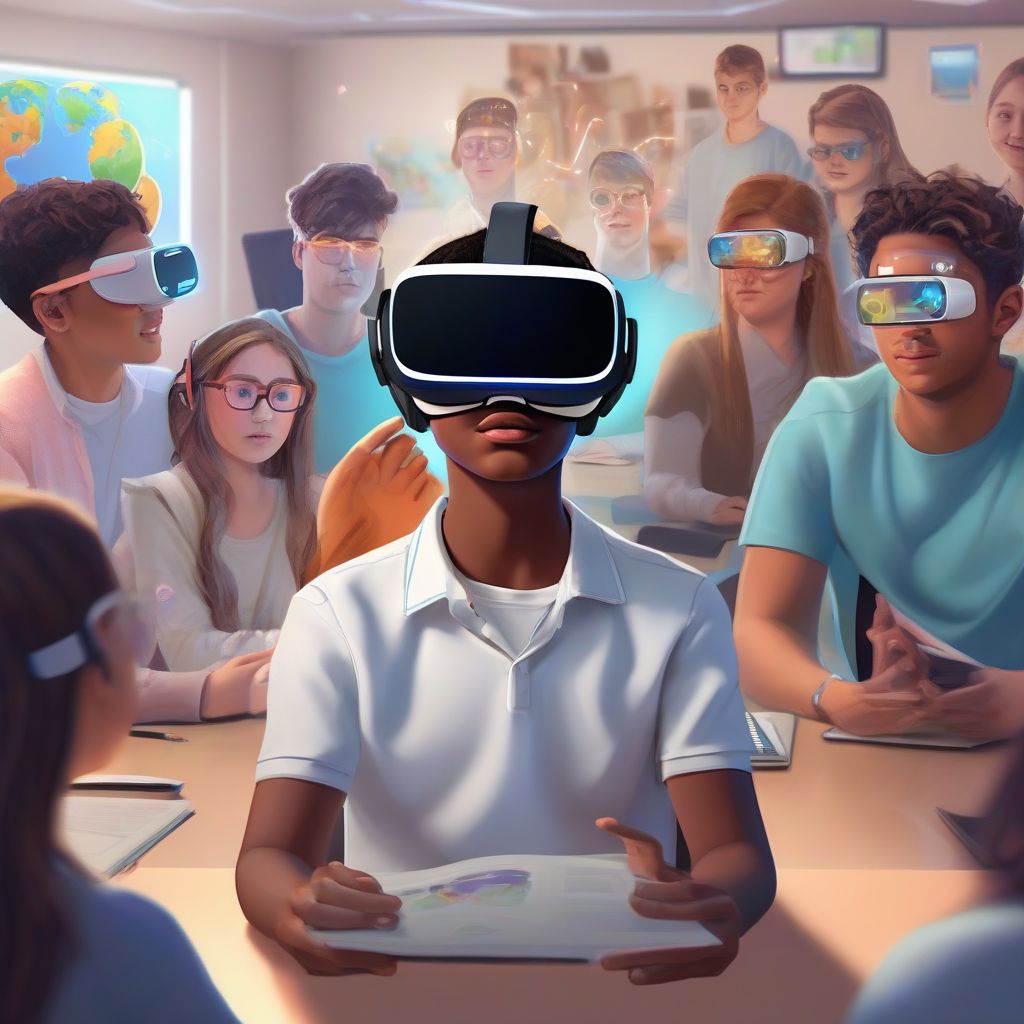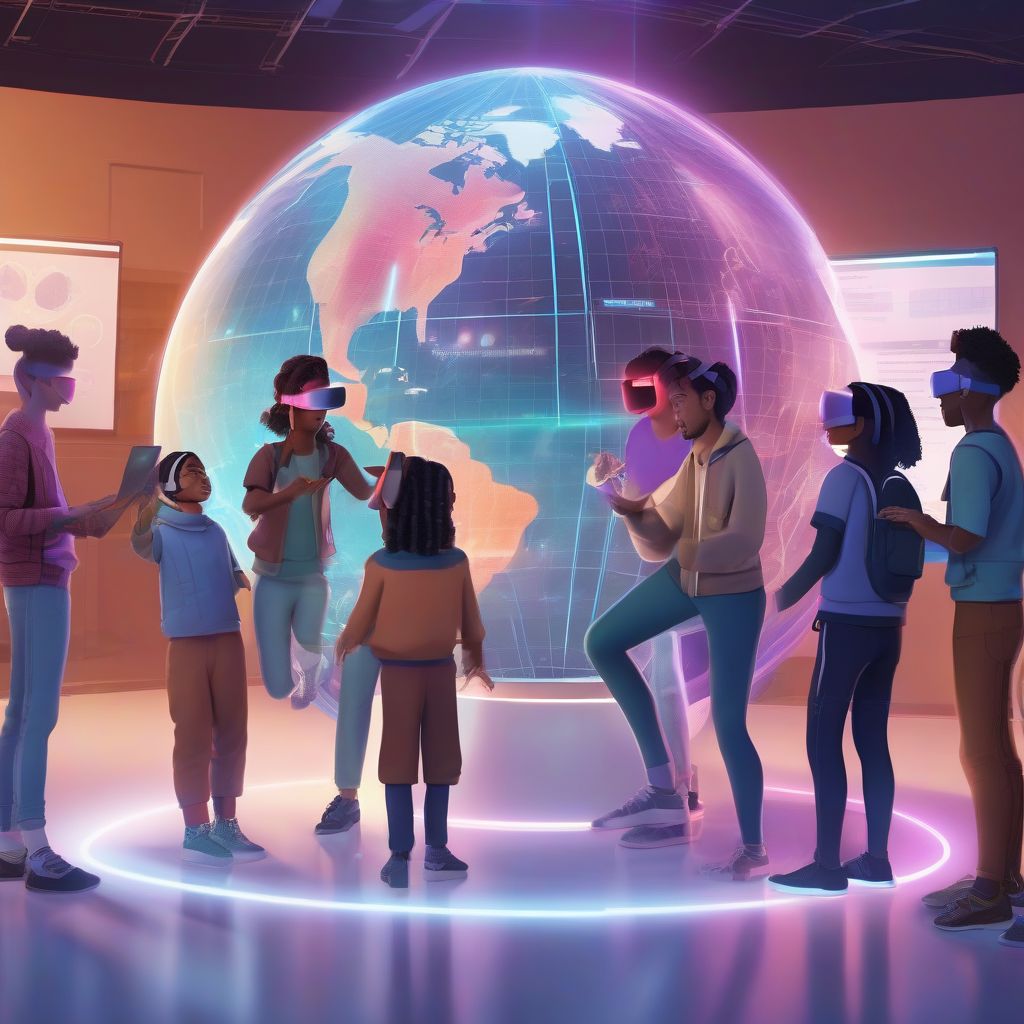Imagine a classroom where geography fades away, and you’re no longer confined to a desk. Picture interacting with historical figures, dissecting a human heart in 3D, or traveling through the Amazon rainforest, all from the comfort of your own home. This is the promise of virtual reality (VR) in distance learning and online education – a promise poised to revolutionize how we learn and teach.
Breaking Down Barriers: Accessibility and Engagement
One of the most significant impacts of VR in education is its ability to level the playing field. For students in remote areas or with disabilities, VR can provide access to experiences and resources that were previously out of reach. Imagine a student in a wheelchair exploring the Great Wall of China or a child with autism practicing social skills in a safe, simulated environment. VR makes these scenarios possible, fostering inclusivity and equal opportunities for all learners.
Beyond accessibility, VR tackles one of the biggest challenges in distance learning: engagement. Traditional online courses often struggle to replicate the immersive, interactive nature of in-person learning. VR injects excitement and engagement back into the equation.
 VR Headset in Education
VR Headset in Education
A Multi-Sensory Learning Experience
By stimulating multiple senses, VR creates a more immersive and memorable learning experience. Instead of passively reading about the solar system, students can “fly” through space, touch planets, and experience the vastness of the universe firsthand. This active participation leads to deeper understanding, better knowledge retention, and increased motivation to learn.
Collaboration and Social Interaction in Virtual Spaces
VR also fosters collaboration and social interaction, addressing another pain point of traditional online learning. Imagine students from around the globe working together on a virtual science project, building a virtual city, or debating historical events in a simulated Roman forum. These shared experiences create a sense of community, encouraging teamwork and developing essential communication skills.
From Theory to Practice: Real-World Applications of VR in Education
The applications of VR in education are vast and continually expanding. Let’s explore a few examples:
- Medical Training: VR allows medical students to practice complex surgical procedures in a risk-free virtual environment. They can hone their skills, repeat procedures as needed, and receive immediate feedback without jeopardizing patient safety.
- Engineering and Design: Students can design and test prototypes in a virtual world, manipulating objects, testing different materials, and visualizing their creations in 3D before bringing them to life in the physical world.
- History and Culture: VR transports students back in time, allowing them to walk through ancient cities, interact with historical figures, and experience historical events firsthand, making history come alive in a way that textbooks never could.
Addressing the Challenges: Cost and Accessibility of VR Technology
While the potential of VR in education is undeniable, some challenges remain. The cost of VR headsets and software can be prohibitive for some institutions and individuals. However, as technology advances, the price of VR equipment is steadily decreasing, making it more accessible to a wider audience.
Bridging the Digital Divide and Ensuring Equitable Access
Furthermore, ensuring equitable access to VR technology is crucial. Educational institutions, governments, and technology providers must collaborate to bridge the digital divide and ensure that all students, regardless of their socioeconomic background, have the opportunity to benefit from VR-enhanced learning experiences.
The Future of Learning: A Blend of Physical and Virtual Worlds
VR is not meant to replace traditional classroom learning entirely. Instead, it serves as a powerful tool to enhance and supplement existing educational practices. The future of learning lies in a blended approach that combines the best of both worlds—the social interaction and hands-on experiences of physical classrooms with the immersive, engaging capabilities of virtual reality.
 Virtual Reality Classroom
Virtual Reality Classroom
[amazon bestseller=”virtual reality headset for education”]
Conclusion: Embracing the Transformative Potential of VR
The integration of VR in distance learning and online education marks a paradigm shift in how we learn and teach. By breaking down barriers to accessibility, fostering engagement, and providing immersive, interactive learning experiences, VR has the power to transform education as we know it. As we continue to explore the vast possibilities of this technology, we can create more inclusive, engaging, and effective learning environments for all students, preparing them for success in an increasingly digital world.
What are your thoughts on the role of VR in education? Share your insights and join the conversation below!
